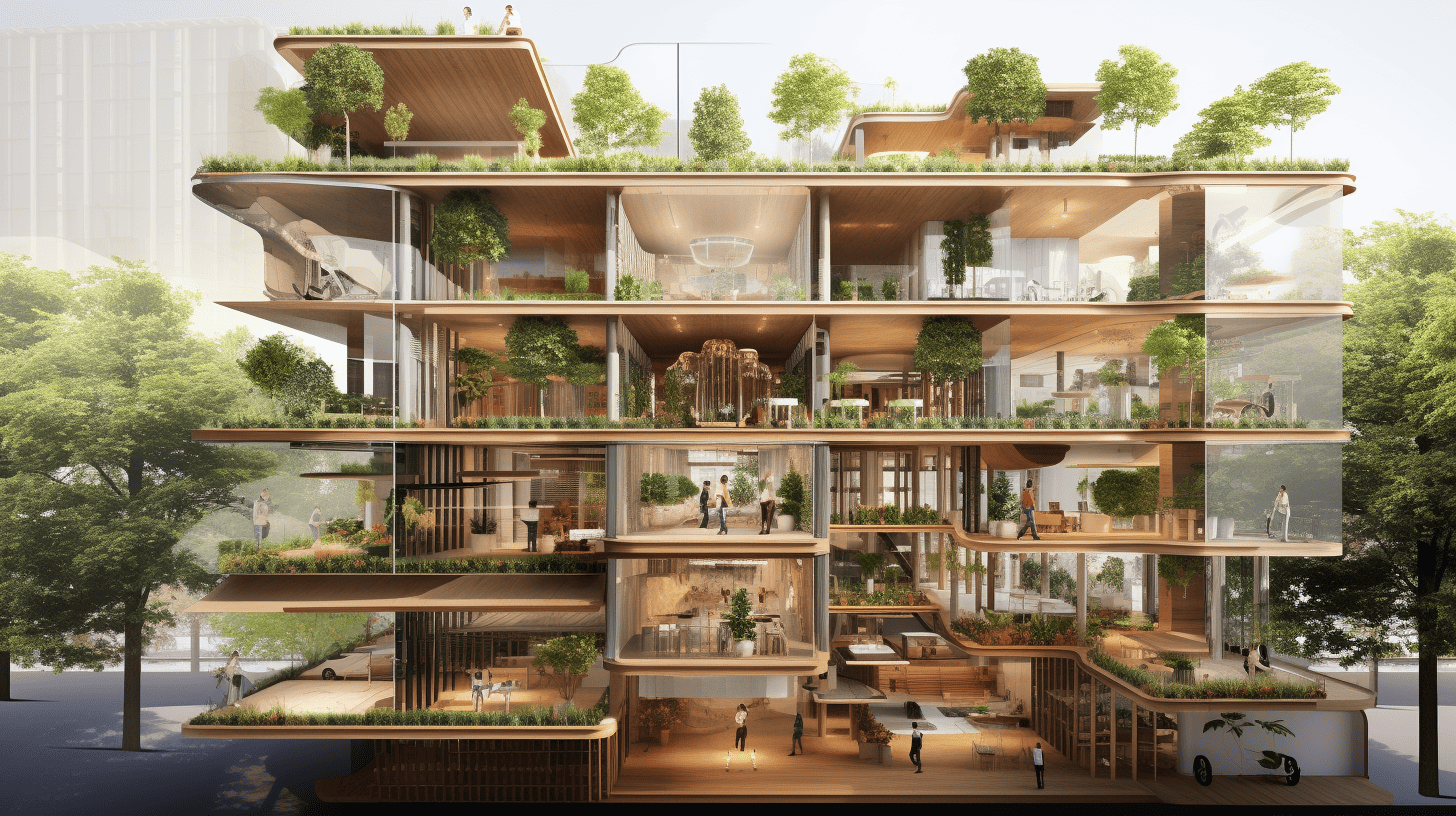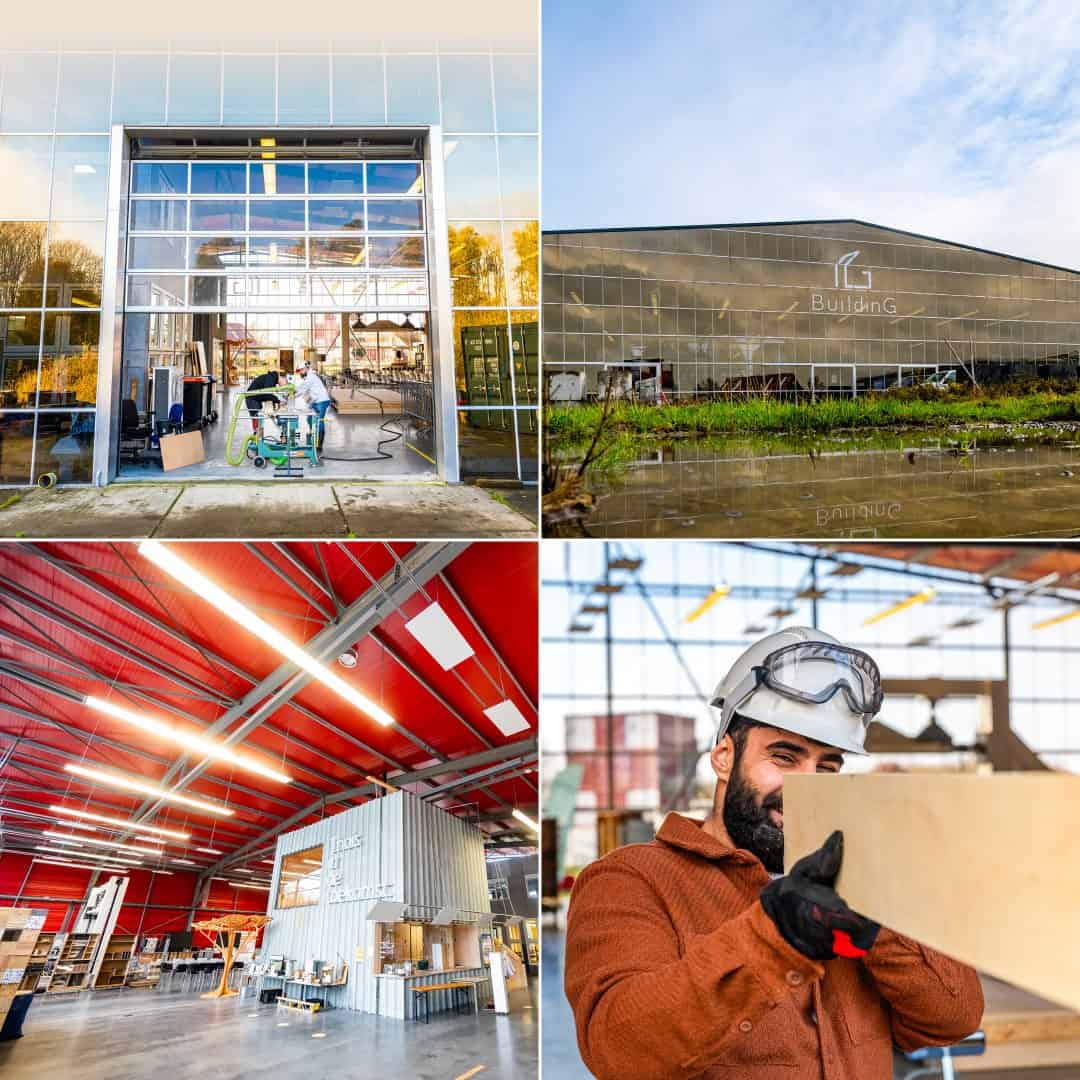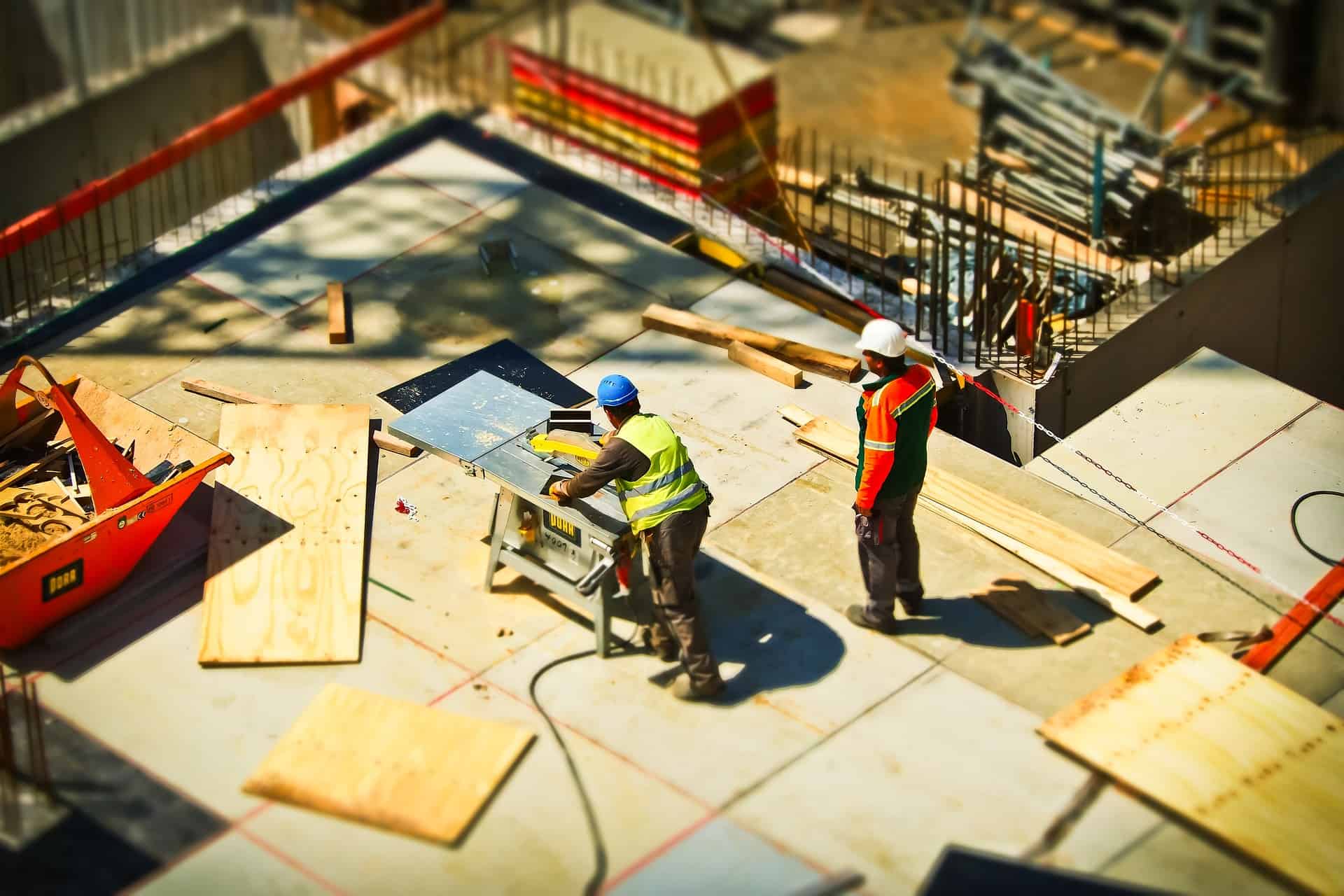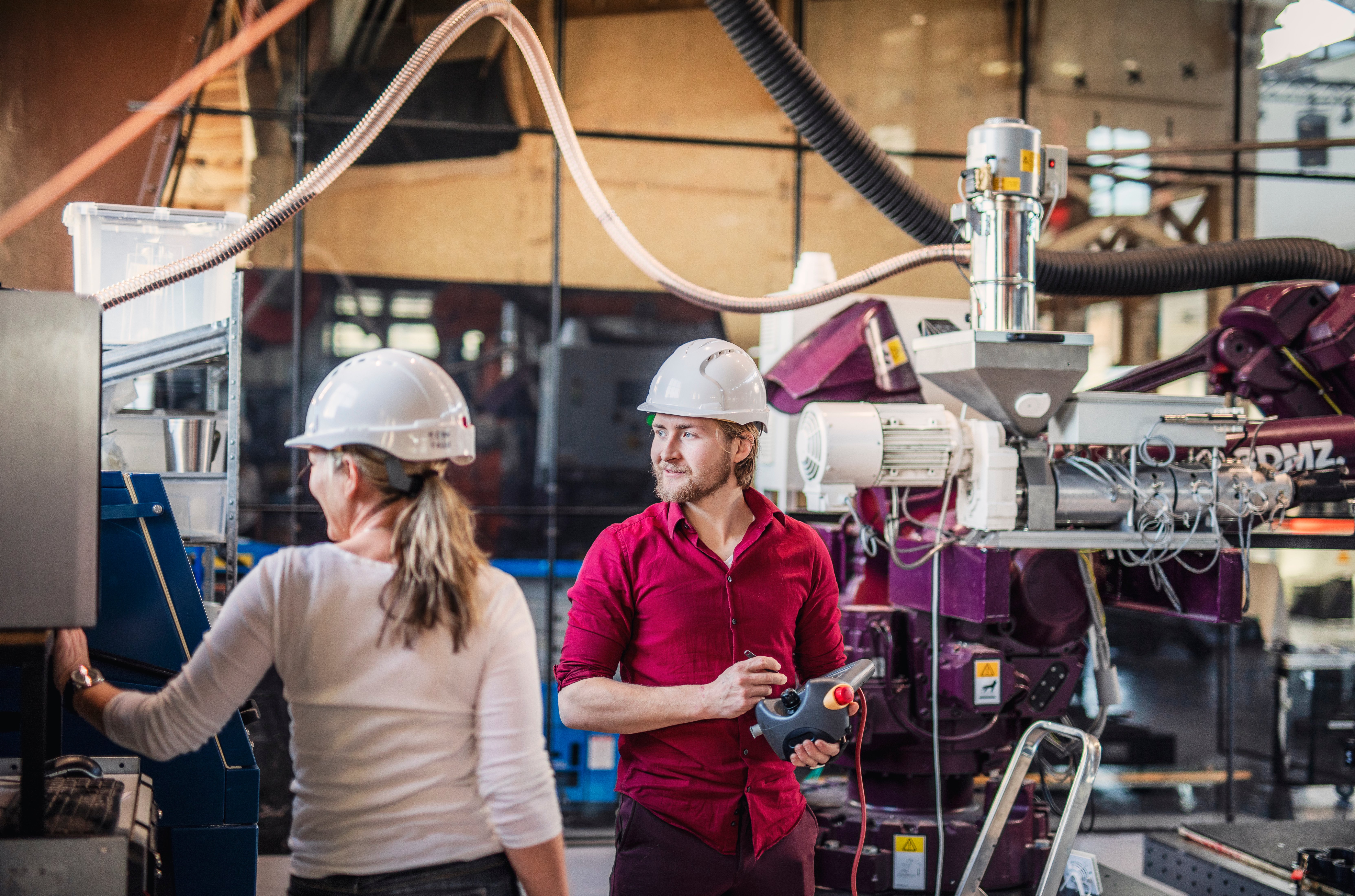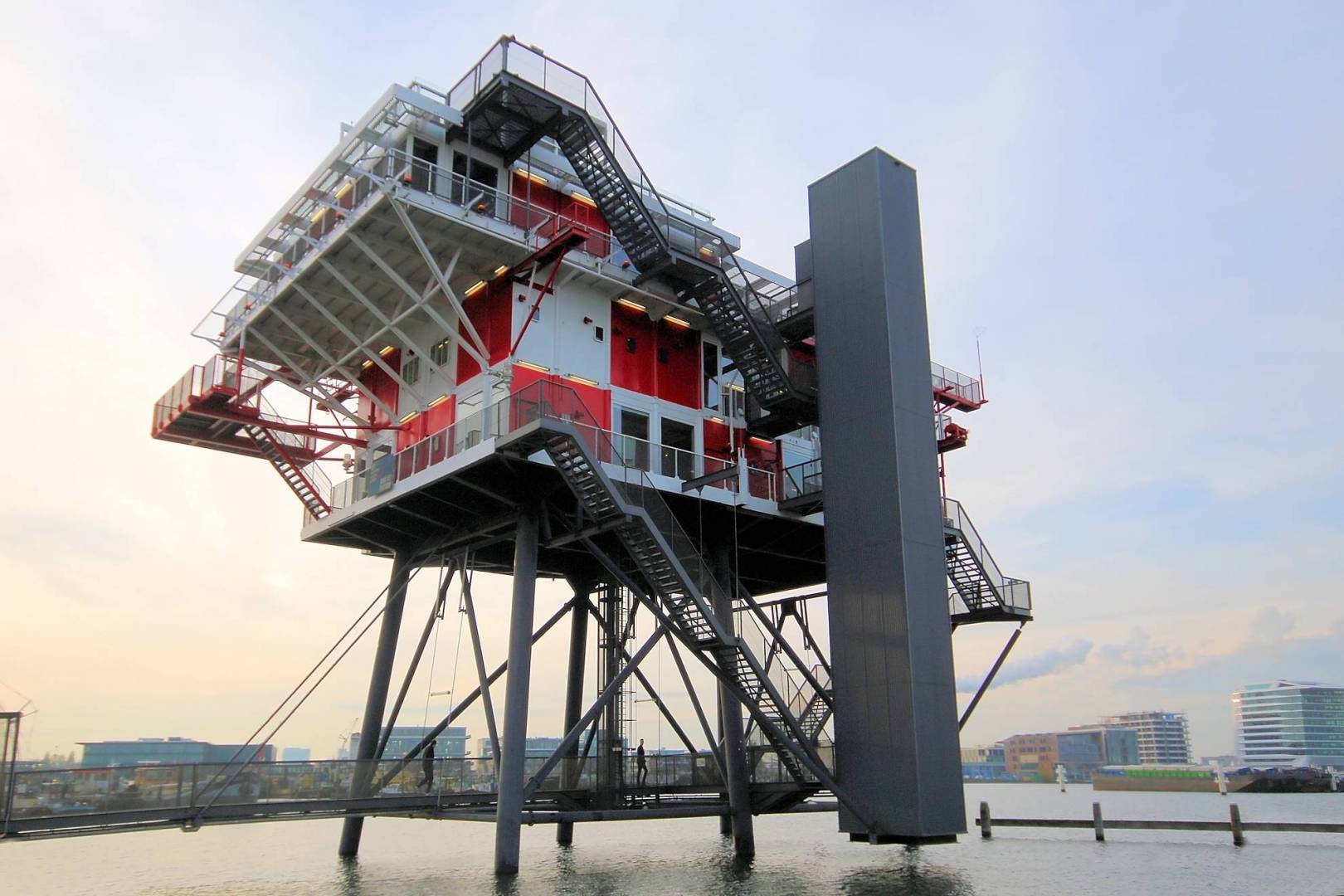
For Huygen, it’s all about healthy and future-proof buildings. Huygen’s engineers and consultants are specialized in technical installations and building physics. In addition, Huygen takes part in (international) research into renewable energies, construction methods, energy optimization, comfort, and the behavior of users in those buildings. “Projects that our children and grandchildren can be proud of later motivate us every day.” “Projects that our children and grandchildren can be proud of later motivate us every day.”

City Hall Maastricht, the REM island, the Bijenkorf and the A’DAM tower in Amsterdam, SS De Rotterdam: the pride about these prestigious projects from the past radiates from Huygen’s website. Still, when we talk to general director Corné Gilissen and researcher Ana Tisov, the conversation is mainly about the future. Both in the research and in the concrete advice and implementation, the company is constantly looking for the steps that are still needed to achieve the ultimate goal: an energy-neutral way of building and working. “Essential to this is our integral approach: always looking at the elements in their mutual relationship,” says Gilissen. “Only in this way can we bring together health, sustainability, and productivity in the office environment.”
Precisely because of those goals, Huygen feels perfectly at home on Brightlands Chemelot Campus in Geleen. “We only find companies here with the same high ambitions as we have. That makes the network an effective one.” The development of the Circular Hub will only strengthen that situation, Gilissen expects.
Ambition and feasibility
The tricky part of Huygen’s position is that most potential customers don’t know what’s possible and regulations are often too rigid. “Customers understand that they have to become more sustainable, but they don’t want to deal with the hassle, all the different parties they have to involve and the sometimes confusing rules. This makes them feel that the feasibility of a project is not always aligned with their ambition. That’s why we always advocate an integral approach – only by having an overview of the possibilities and interests of all parties can you arrive at a real solution.”
Huygen has an answer to every construction-related question, but more is needed for broad application, says Gilissen. “We need to pave the way for the solutions to be implemented sustainably and that always requires more stakeholders. That’s why we joined the Oosterhoff Group last year, a group of like-minded engineering and consulting firms, each with a good name and position in the market.”
The route to a circular construction world

Equally important is Huygen’s participation in European research, including the Horizon2020 projects. Within these, MORE-CONNECT and Drive 0 are outstanding. The former helps the European construction industry to offer integrated solutions for renovations towards a near-zero energy building (“nZEB”) at a reasonable cost. “The construction process is too often based on a ‘layered’ structure, with many labor operations on-site, involving many sub-disciplines,” says Ana Tisov, one of Huygens researchers. “The urgency is widely recognized, but the European construction industry has not yet been able to work out a systematic approach.”
MORE-CONNECT, according to Tisov, seeks to address that problem with prefabricated renovation elements that lower costs, reduce renovation time and inconvenience to occupants, while increasing quality. “Both in terms of energy efficiency and indoor climate,” she says. MORE-CONNECT was a basis for the next project, Drive 0, where the focus is on the circular built environment. “Here the focus is on circular product innovation, circular process innovation, and innovative circular economy business models.”
Light and temperature
European research regularly leads to breakthroughs, says Tisov. “These EU projects are good examples of that, however, there is more to that. The point is often that people don’t know what they do not know. With applied research, we show what is possible, for example, which dynamic combination of light and temperature has the best effect on health, well-being, and energy consumption. As a result, the heating can be turned down without users getting colder.” Such a move doesn’t just lower energy bills, says Tisov. “Often what seems comfortable at first glance is not necessarily healthy as well. We may like a constant indoor temperature, but such a situation does not activate our body’s metabolic system. With a dynamic indoor climate, we can make that happen. And of course, lower temperatures also lead to energy savings and thus, to lower energy bills.”
Huygen wants to discuss the results of all that research with their customers. “And the initiative for that has to come from us; we can’t afford to wait for a demand from the market.”
To collect even more usable data, Huygen also has its own ‘experience lab’. Gilissen: “There we can play with light and temperature. What is 400 lux anyway? It is the prescribed light strength, but is it necessary in all circumstances? Light uses one-third of a building’s energy, so it’s a relevant question.” Still, translating this into daily life is hard. “We showed that 300 lux is good enough in certain circumstances, but that’s not the end of the story. The official Building Decree is rigid, as are many other guidelines. To make real progress towards energy-neutral buildings, we have to dare to let go of those kinds of standards.”
Glass Palace
Gilissen and Tisov realize that a lot of time is needed before that will happen. In the meantime, they are focusing on the projects that their children and grandchildren can indeed be proud of. As they did twenty years ago with the repurposing of the Glass Palace – Glaspaleis – in Heerlen. “We made it fit for another 25 years of service. A wonderful example of circularity. With technical marvels such as activation of the concrete skeleton and an “installation floor”, and with a facade for which we developed the highest quality glass. Thanks in part to the courage of the municipality, we were able to pull this off. This kind of forward-thinking also helps us to further build our track record; we always take our experience to all our next partners and customers.”



